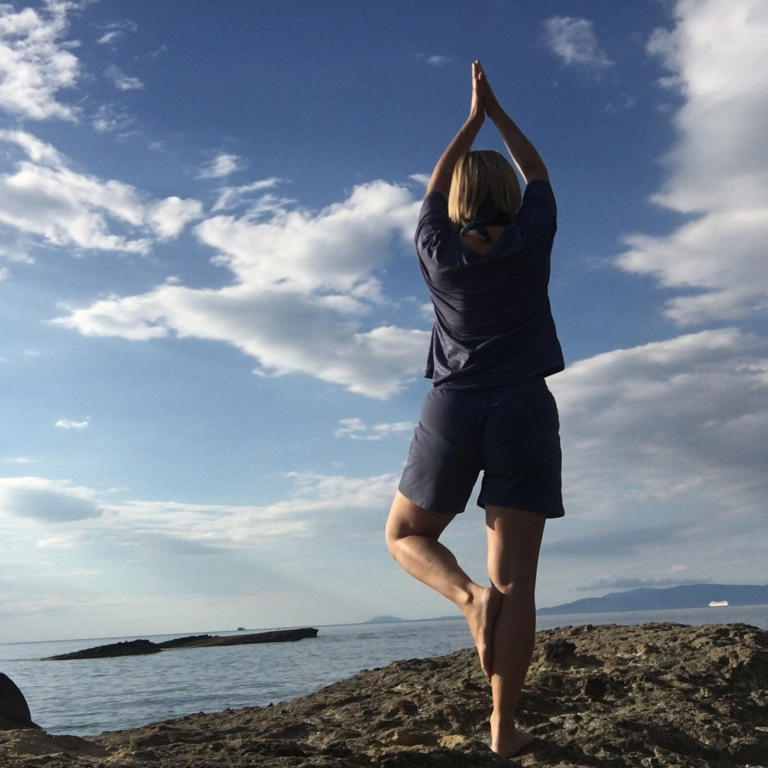Was there ever a more misunderstood activity than yoga? Despite its longevity – some records vouch for it being five millennia old – and a philosophy of moving for health that’s hard to dispute – it remains divisive. There are the evangelists, the dismissives, the cynics and the just plain terrified.
The terrified fear something akin to torture, where freakishly flexible teachers force them to contort their aching bodies into inhuman shapes. The dismissives disapprove of new-age hippy chanting and communing with chakras, while cynics criticise the fashionistas capitalising on the opportunity to show off ridiculously expensive Lycra. As for the evangelists, they won’t stop going on about how they cannot live without their yoga practice, which has transformed their bodies, their minds and their relationships.
Also Read– Bipartisan Senate bill aims to bolster drug supply chain by prioritizing U.S. manufacturing
It will be fairly clear to which camp I belong when I confess that my latest book is called “Yoga Saved My Life”. This would be an outrageous title were it not for the reams of scientific studies now producing indisputable evidence of yoga’s health benefits. Most recently a new piece of research, led by the University of Rochester Medical Centre in New York state, showed that it can reduce the risk of cancer returning and spreading.
My own yogic story started 35 years ago when I embarked on some classes in an attempt to bring an end to two years of insomnia and depression, triggered by a breakup with my then boyfriend. I went from struggling to sleep more than four hours a night to getting my full eight and found my mood lightening.

I soon found yoga becoming an indispensable part of my life, realising that as I became stronger, fitter and more flexible in my body, I also found my mind was clearer and I could manage my emotions with greater ease. The idea for my book grew out of this experience and led to my discovering more about the vast array of conditions that yoga can address – from the fatigue, depression and insomnia that had drawn me to it, to studies on bone health, immunity, diabetes, post-traumatic stress, and so much more.
For millennia yogis across the globe have known of yoga’s powerful health-giving properties, but to now have so many scientific studies backing up their anecdotal experiences is very reassuring.
So what benefits have been proven?
Also Read– Navigating pregnancy and new motherhood with a chronic illness
Two classes a week reduces the risk of cancer
This sounds like an extraordinary claim, but knowing yoga as I do, I am not at all surprised that scientists have recently found that yoga can help prevent cancer.
The study, by researchers at the University of Rochester, showed that two yoga classes a week for one month reduces inflammation in recovering cancer patients. The study was based on 500 cancer survivors. Two groups spent 75 minutes twice a week either practising yoga or taking part in health education sessions.
Blood samples showed that after one month the yoga group had significantly lower levels of inflammation markers. Given that inflammation is now understood to underlie not only cancer but problems as diverse as arthritis, depression and cardiovascular disease, finding a simple, practical solution for lowering levels is a breakthrough.
The authors of the study advised that doctors should prescribe yoga to cancer survivors: “Clinicians should consider prescribing yoga for survivors experiencing inflammation, which may lead to a high chronic toxicity burden and increased risk of progression, recurrence, and second cancers.”

Helps control diabetes
Whilst powerful, yoga alone is not a miracle worker. It does need to form part of a healthy lifestyle. Over four million people in the UK have diabetes, with nearly two and a half million currently at risk of developing it, according to Diabetes UK. Ninety per cent of diagnoses are Type 2, where lifestyle choices can make a huge difference.
In her 2021 book “Yoga Therapy for Diabetes”, yoga therapist Evan Soroka explains how yoga works to counteract diabetes on many levels. This is due to it not being simply exercise but an integrated system of movement, breathing practices and meditation, which together can affect the nervous system and calm the stress response. When we’re stressed our blood sugar and blood pressure levels increase, so controlling stress can have a positive effect on blood sugar control and the chance of developing Type 2 diabetes.
Also Read– This big concept will change medicine
More gentle forms of yoga, such as yin, which is more floor based and holds poses for longer, will help. As will the very relaxing, restorative yoga, where next to no movement is needed but instead bolsters are used to support muscles into deep softening. If you are more active, then focusing mainly on forward folding postures and emphasising a longer, slower exhalation will lower the heart rate, stimulate the parasympathetic nervous system and tone the vagus nerve. This mediates the secretion of insulin and helps lower blood sugar levels.

Builds bone density
By contrast, the more active styles of yoga such ashtanga with its formalised sequencing will help those needing to build strength and increase bone health.
A 2016 study by the Rockefeller University in New York showed that participants doing yoga three times a week significantly improved bone mineral density in their spine, hips and thigh bones. This is particularly important for post-menopausal women who are more prone to osteoporosis as oestrogen levels drop. Another 2016 study focused specifically on women with post-menopausal osteoporosis.
They did a one-hour yoga class four days a week and after six months their average T scores (a measure of bone density) had significantly improved. For better bone health focus on standing postures such as triangle and warrior poses, and arm balances like crow, to build strength.
Also Read– Why You Never Want to See These Four Letters on Your Boarding Pass
Reduces symptoms of depression
Yoga is as much about healing the mind as the body, with numerous studies showing it works as a natural antidepressant. A 2019 study published in the Journal of Psychiatric Practice found that attending twice weekly 90-minute yoga classes, for one month, reduced symptoms of depression and increased feelings of positivity.

Further studies have shown that yoga increases a brain chemical called gamma-aminobutyric acid or GABA, which is associated with better mood and decreased anxiety. To reduce depressive symptoms choose a more energetic type of yoga such as a flow class. Focus on backbending postures and emphasise a longer inhalation in order to raise the heart rate and stimulate the sympathetic nervous system.
Heals post-traumatic stress (PTS)
Most of us can relate to stress and anxiety being part and parcel of everyday life, but it is still shocking to hear that a Mental Health Foundation study found 74 per cent of its participants were suffering from stress. One in three people who have experienced trauma go on to develop post-traumatic stress.
This can be a debilitating condition, provoking symptoms as diverse as flashbacks, dissociation and can even lead to addiction in some. Psychiatrist Bessel van der Kolk’s bestselling book, The Body Keeps the Score, explains the physiological response to trauma. When faced with severe threat the body’s survival instinct is to move into either a fight, flight or freeze response. Sometimes it can get stuck there.
Also Read– Why You Never Want to See These Four Letters on Your Boarding Pass
He concluded that the treatment of trauma must therefore also include a physical element, talking therapy alone cannot get to the physiological root. His years of research has resulted in the creation of a “Trauma Sensitive Yoga’” model, which has been shown to bring down markers in many of the symptoms of PTS.
If you are suffering any form of complex trauma or heightened stress then look for a trauma sensitive teacher. How a posture looks, and achieving its full expression externally is unimportant. The emphasis here is on how each posture is experienced internally. The aim is to reconnect yourself with a body that may have felt alienated by its trauma.

Boosts brain health and memory
It’s not just severe physical and psychological problems that yoga might help you with. It could even assist you in finding the car keys you keep absent-mindedly losing, or improve your crossword abilities.
A meta-analysis led by Dr Neha P Gothe at the University of Illinois Urbana-Champaign found that several studies, using MRI scans, have shown a regular yoga practice changes brain structure, causing cells to develop new connections. The cerebral cortex in regular practitioners is seen to be thicker than in non-practitioners.
Read More:-2 states investigating NFL over allegations of workplace discrimination, hostility
This is the part of the brain responsible for processing information, so thickness in this area means improved reasoning, decision-making, reaction times, attention and language. The hippocampus, the area of the brain involved with memory and learning, is also thicker. This all suggests that yoga may counteract age-related declining cognitive skills.
Concentrate on balancing postures such as dancer or tree to heighten focus, inversions like downward dog to encourage blood flow towards the brain, and breathing exercises to improve the transfer of oxygen into cells. All these improve brain health and function.
The MRIs were carried out on long- term yogis, but reluctant beginners may be comforted to know that many of the other studies suggest that even two classes a week for two months can improve brain power. Consult a doctor, and address your lifestyle choices in general, but adding yoga to your weekly routine will significantly improve your physical and mental health.



























